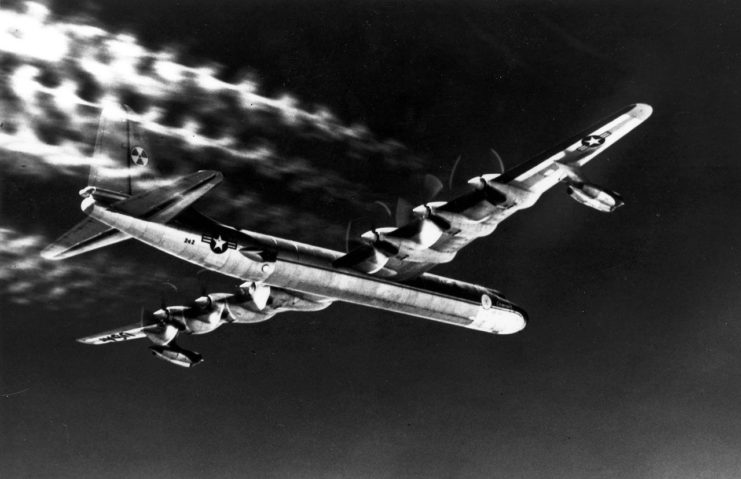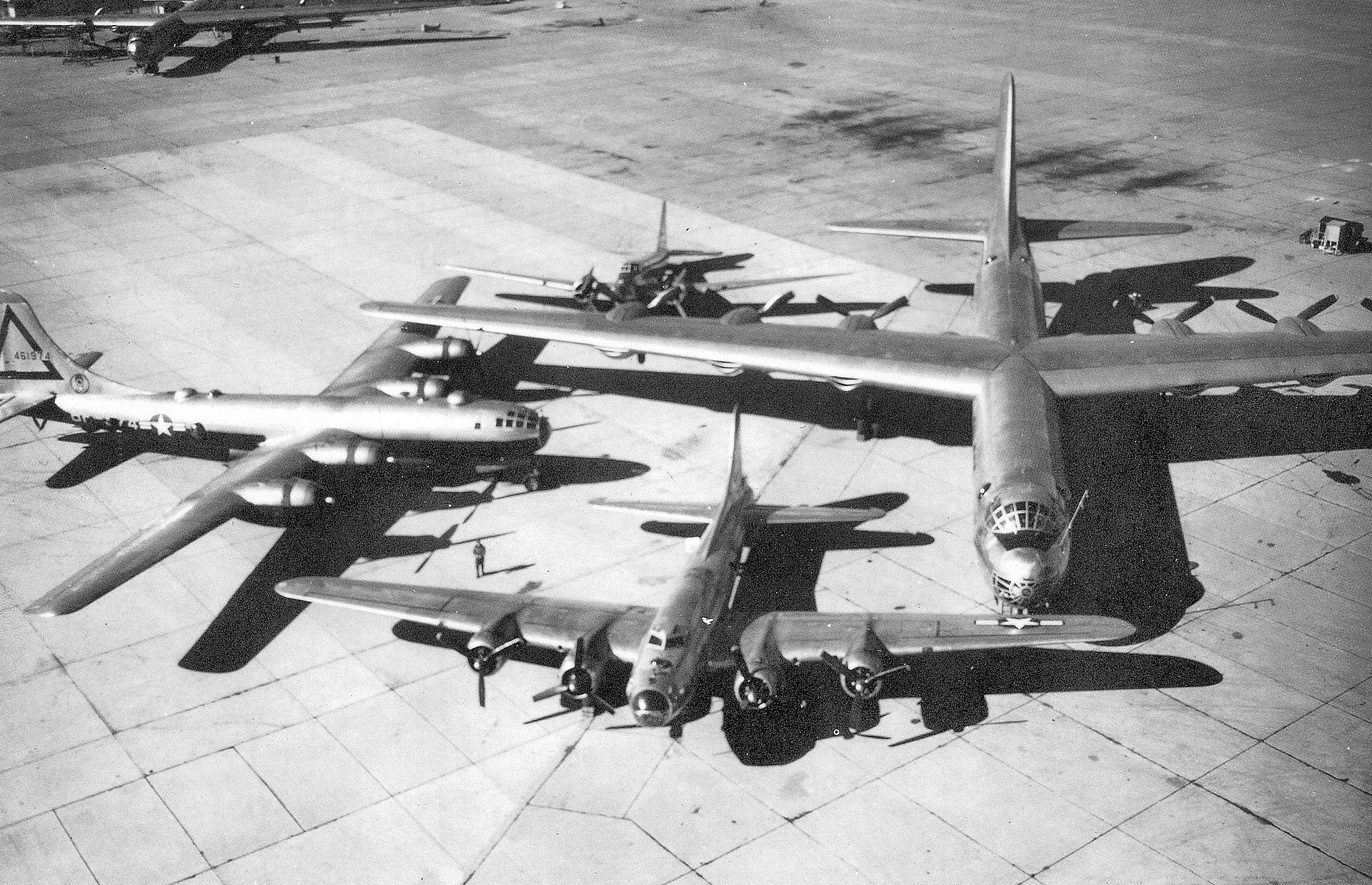The Convair B-36 Peacemaker was a larger than life aircraft in almost every way, but for such a dramatic aircraft, its 1949 – 1959 career was rather brief and underwhelming.
The aircraft’s conception actually dated back to the early 1940s, however by the time it arrived in service, it quickly became obsolete. Despite this, it still maintains the record as the biggest mass-produced piston engine aircraft ever built, and its enormous wingspan of 70 m is the largest on any combat aircraft in history.
The idea of such a mighty aircraft was conceived in 1941 to solve a potential future problem. This problem was if Britain fell to Nazi Germany, leaving the US without airbases close enough to Europe to stage flights from. The solution was an intercontinental bomber, capable of flying a round trip from North America to Berlin.
The United States Army Air Corps original requirement was for the aircraft to be able to reach a maximum of 450 mph, fly at 45,000 ft and possess a 12,000 mile range.
These requirements were simply unachievable with the technology available at the time, so they were reduced slightly. Convair (Consolidated at the time) won the contract for making this aircraft a reality in October of 1941, before the US had even joined the war.
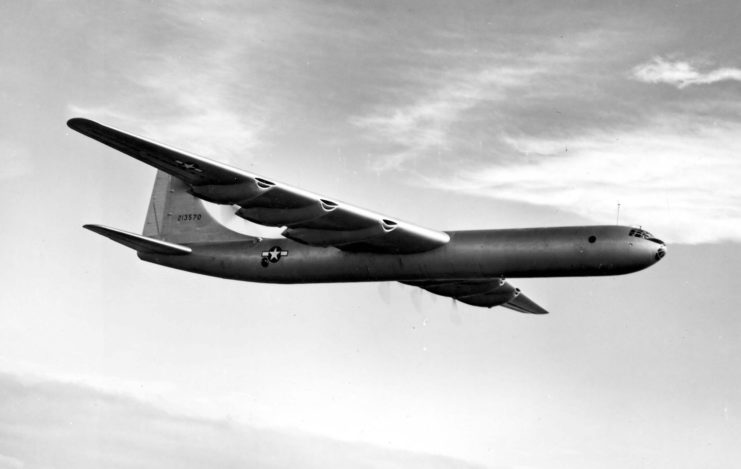
Once the US joined the Second World War, Convair was asked to focus its resources on producing the B-24 Liberator, slowing progress on the B-36. Compounding this was the fact that Britain being occupied was seeming less likely. However the war in the Pacific meant there was still demand for the aircraft, which would be capable of bombing Japan from Hawaii, so work continued.
The resulting creation was an aircraft of gargantuan proportions, but one that arrived too late to see the war, with the first being completed on 20 August 1945.
The 49 m long fuselage was mated with huge wings that measured 70.1 m tip-tip. Six Pratt & Whitney R-4360-53 Wasp Major 28-cylinder air-cooled radial piston engines producing 3,800 hp each were mounted on the trailing edge of each wing to prevent propeller wash from interfering with wing airflow. Each propeller was 5.8 m in diameter, the largest ever mounted on a production piston engine aircraft.
To begin with, the B-36 used single tires on each of its landing gear. The 6.2 m wide, 600 kg tires were the largest ever made at the time, but meant the aircraft was unable to operate from most airbases. This was changed with the production variant, which used four-wheel bogies instead.
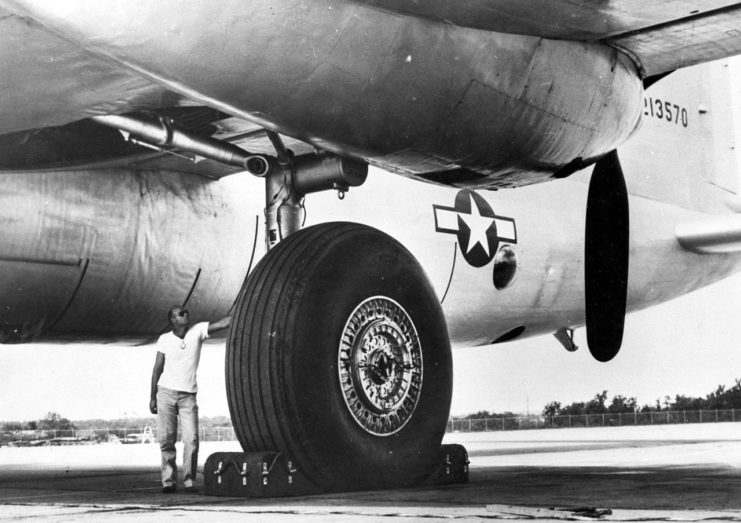
Another change was the addition of two General Electric J47-19 jet engines at the end of each wing, giving the B-36 a total of 10 engines and earning it the nickname ‘six turnin’ four burnin”. The combined output of the B-36’s powerplants was around 40,000 hp.
These specifications led to some incredible capabilities. The B-36 was able to cruise at over 40,000 ft, higher than most AA guns and interceptors of the day, and its huge flight surfaces allowed it to out-maneuverer smaller fighter aircraft at these heights.
It had a combat range of almost 4,000 miles, or a continuous range of 10,000 miles and could stay airborne for up to 40 hours. It was also able to carry an immense bomb load of 39,000 kgs in its four bomb bays, more than event the later B-52 Stratofortress.
Its huge size lead to a complex and rigorous amount of maintenance. Its six 28 cylinder engines needed 336 spark plugs, and were notoriously unreliable. The wings were so large that they were 2.1 m at their thickest, allowing an engineer to crawl through a tunnel to access the engines in flight.
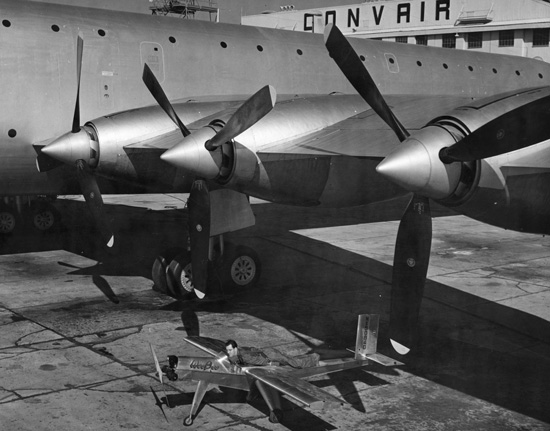
The aircraft had some truly impressive capabilities, but was hampered by advancements in emerging technologies, like anti-air missiles, jet powered interceptors, and faster jet powered bombers and in-flight refuelling, which the B-36 lacked. Its acceptance into service in the late 1940s was truly a time of radical change in technologies, meaning it was immediately obsolete in many ways.
Despite this, the B-36’s trump card was its sheer brawn, capable of lifting more, for longer and further than any other aircraft in the world at the time, and even many more since then. On top of this, the beginning of the Cold War between the US and USSR forced the US to maintain an intercontinental nuclear strike capability.
Newer jet bombers like the B-47 Stratojet lacked the range and payload of the B-36, and the intercontinental ballistic missile was still over a decade away. This meant that the US not only accepted the B-36, but also made it their primary nuclear weapons delivery platform of the Strategic Air Command.
The pure scale of the B-36 meant it was ideal for trailing experimental technologies. A NB-36H was designed to carry an 18 ton nuclear reactor in its bomb bay, as well as a 4 ton lead shield to protect the crew. The reactor never powered the bomber, but it was flown while it was operating for 89 hours in total. The B-36 was also involved in testing parasitic aircraft, which would be carried by the B-36 until they were needed, where smaller aircraft we detach and complete its mission, before returning to the B-36.
The B-36 was also used to test the worlds largest aerial camera, which weighed three tons and could photograph a golf ball from 45,000 ft.
The aircrafts obsolescence would eventually catch up with, when closely-capable aircraft like the B-52 arrived. Its lack of in-flight refuelling, and slow speed made it defenceless against newer, high speed fighters. Scrapping of the aircraft began in early 1956, where aircraft were flown directly from their airbases to US scrapyards.
Thankfully, four B-36s remain today.
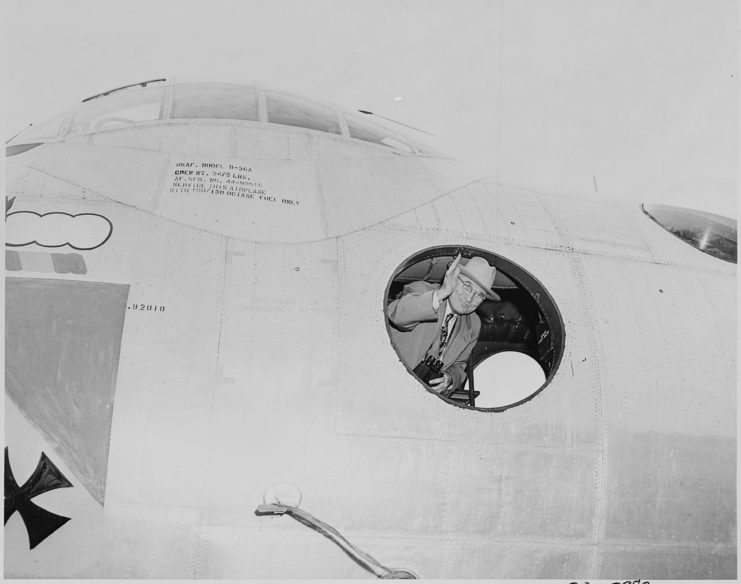
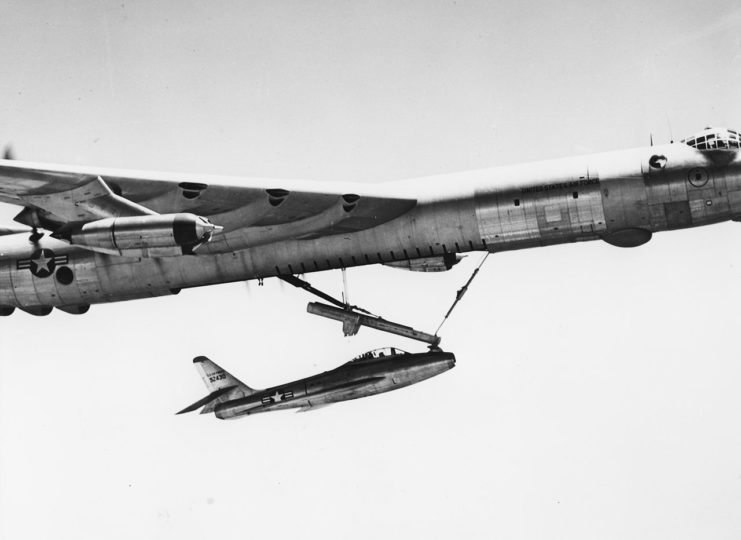
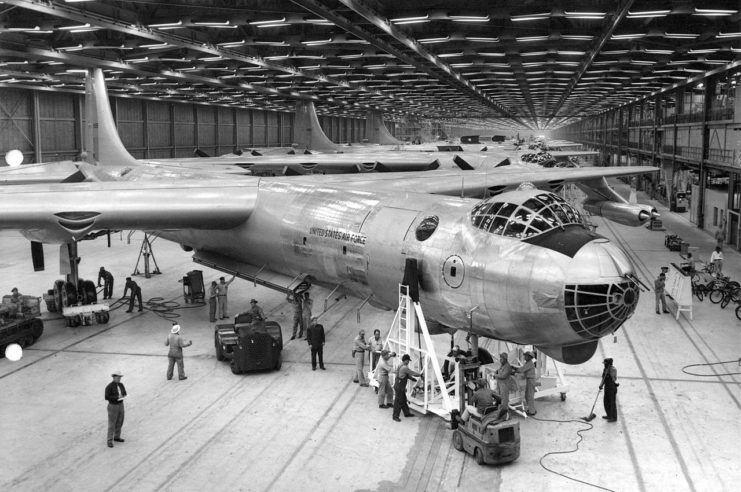
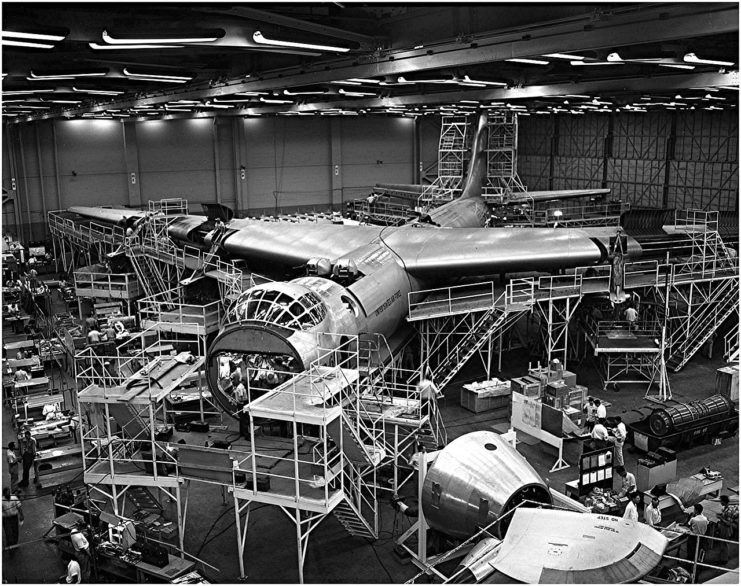
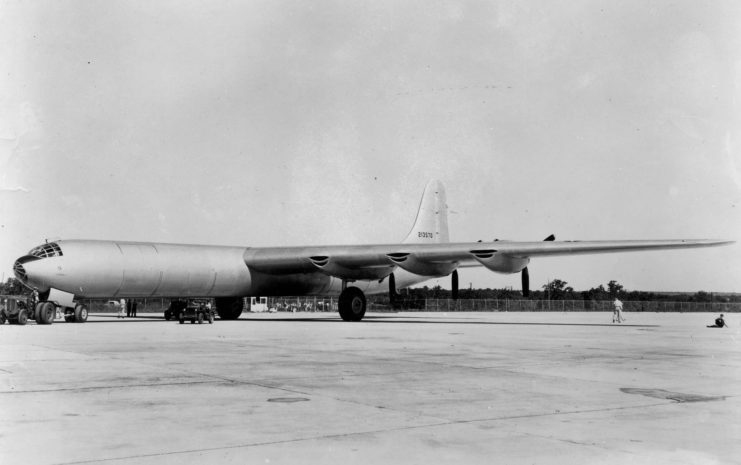
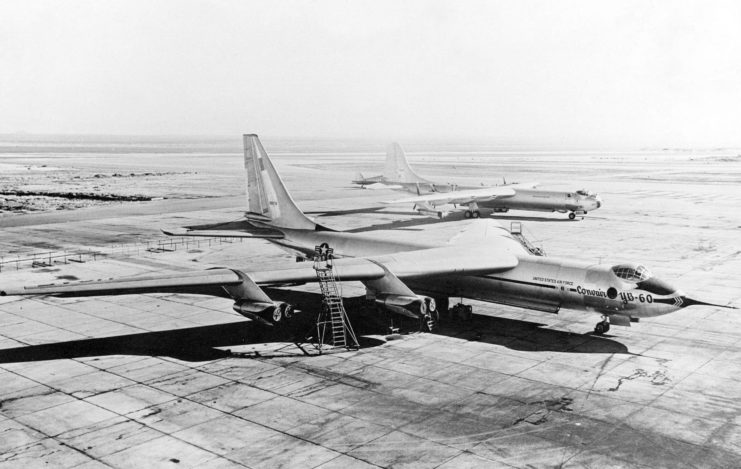
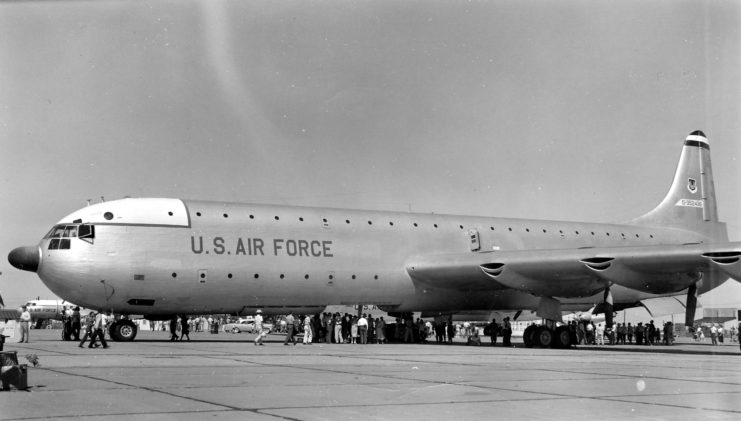
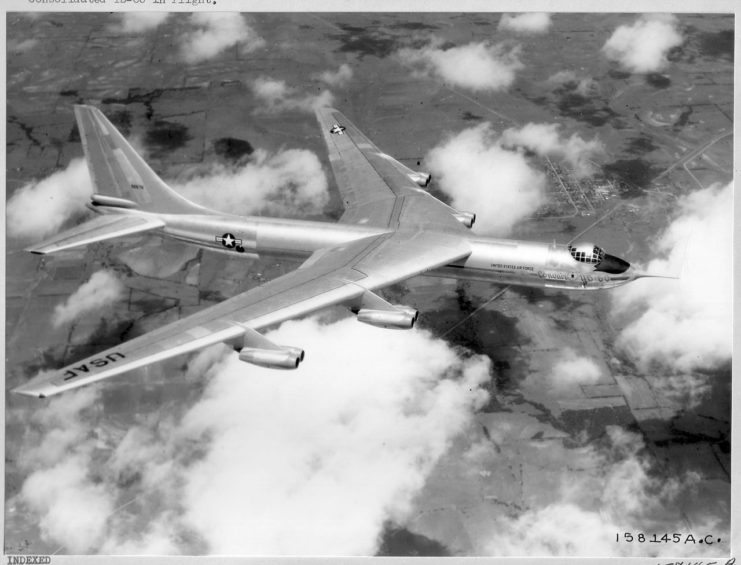
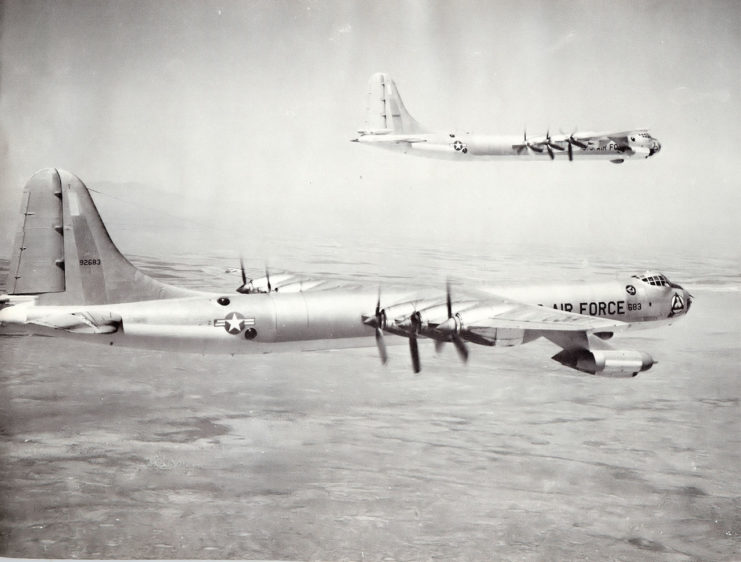
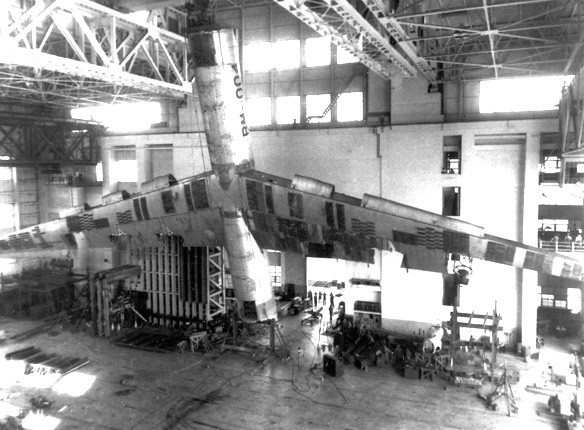
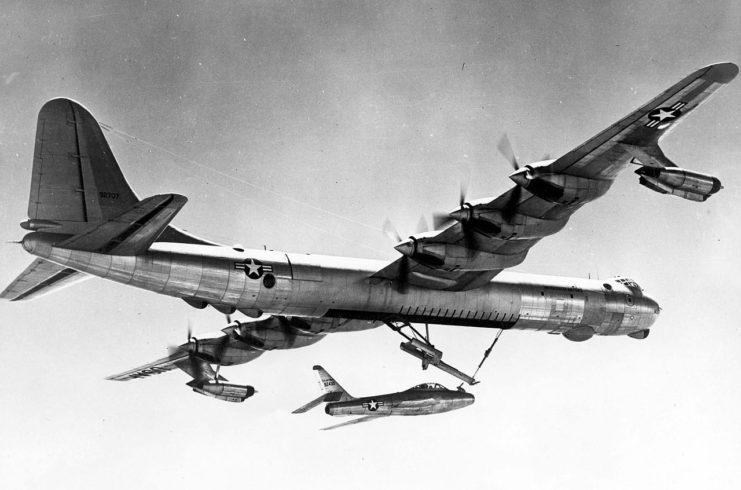
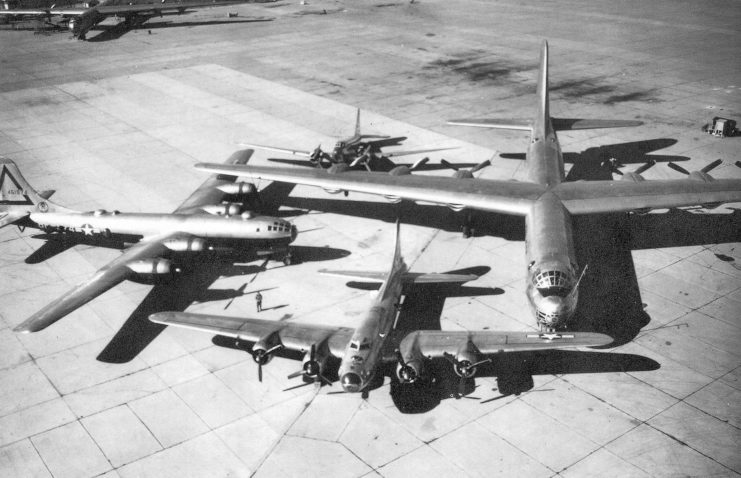
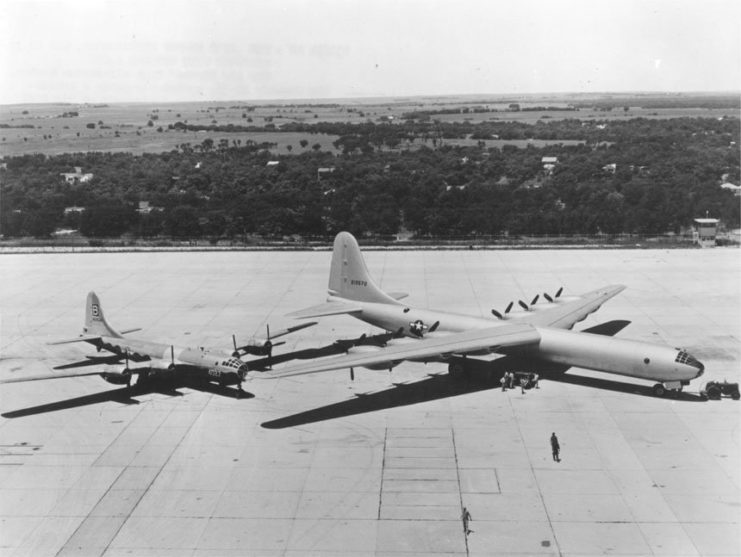
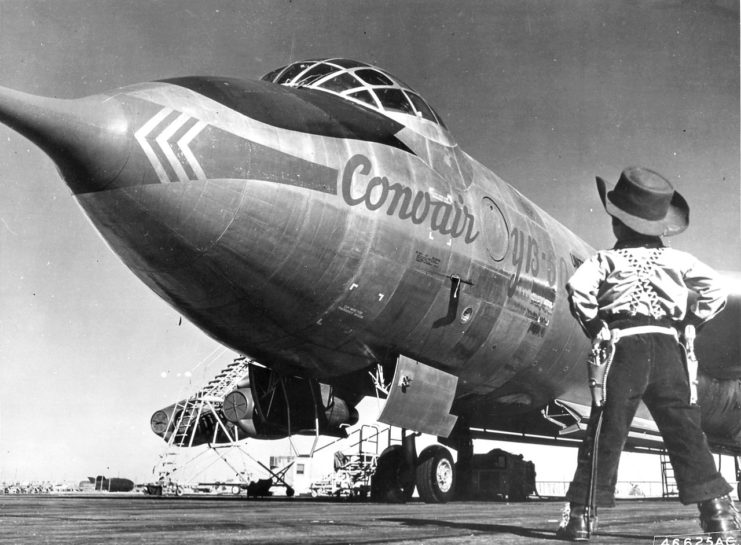
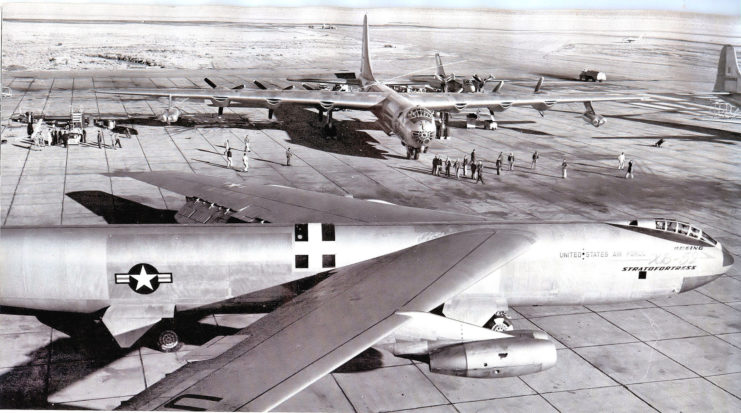
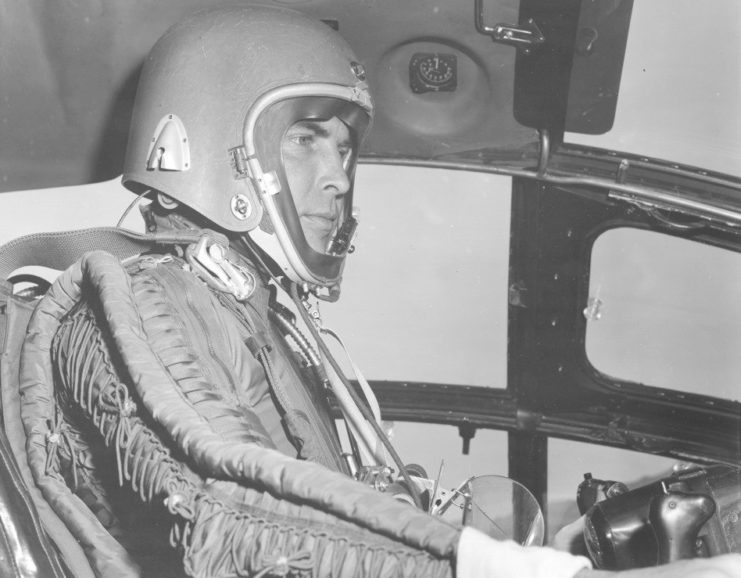
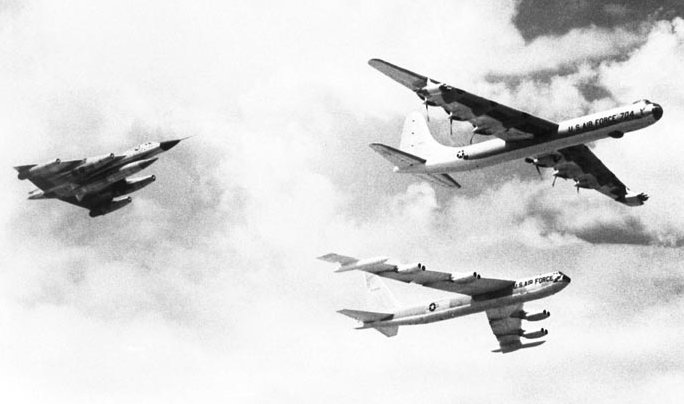
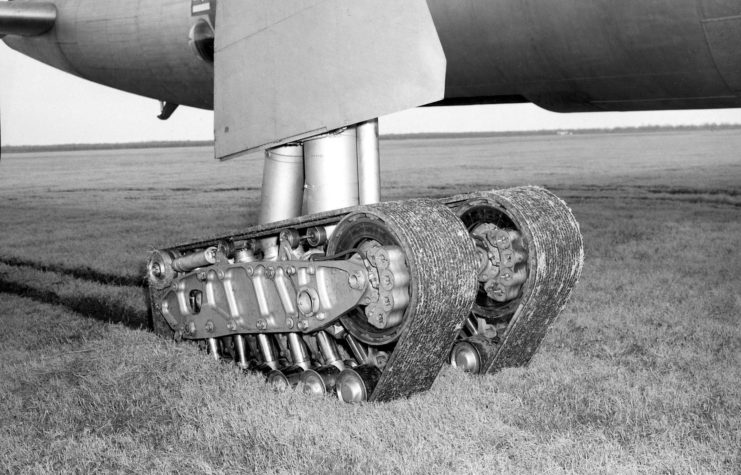

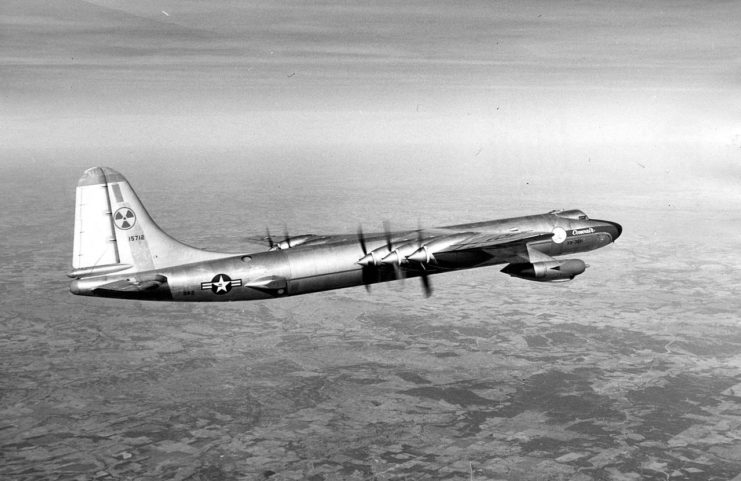
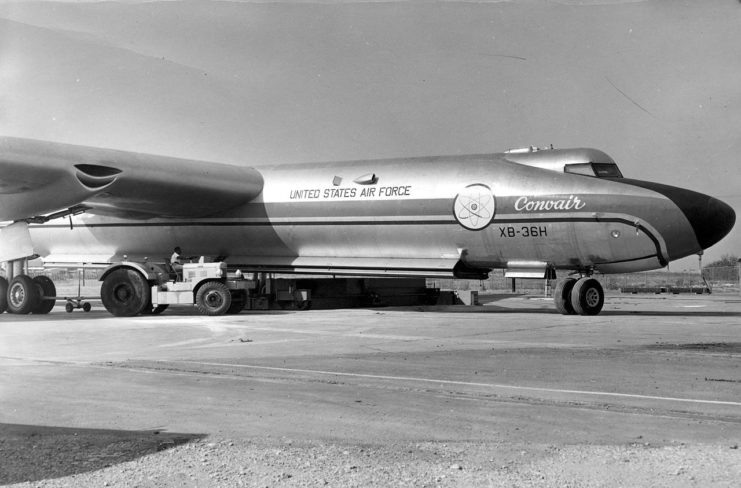
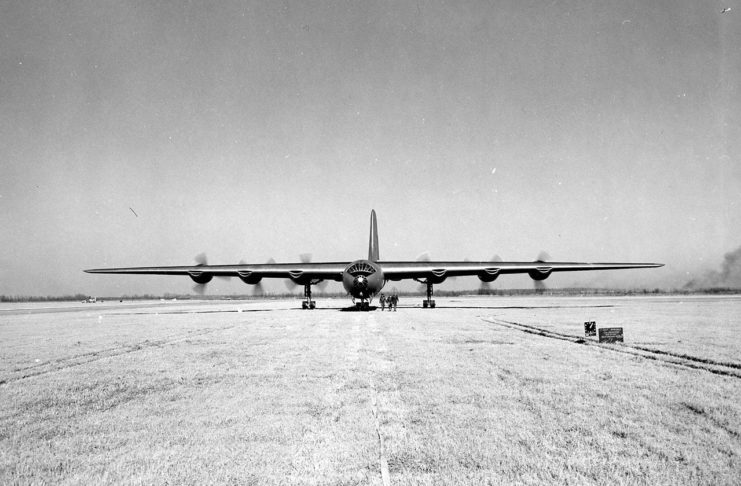
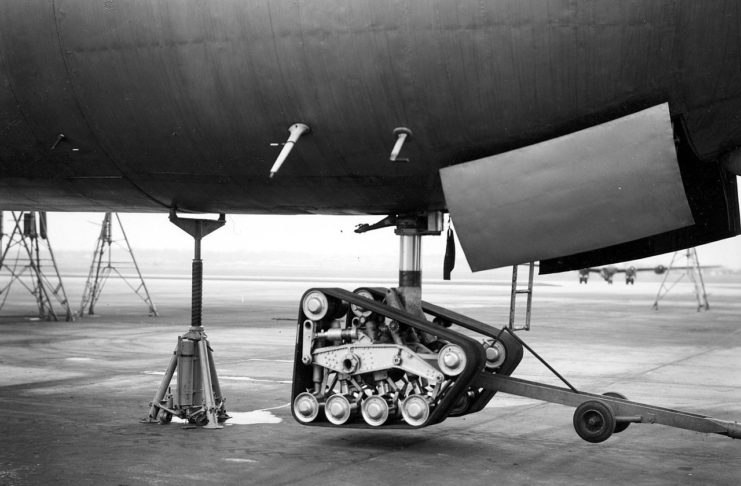
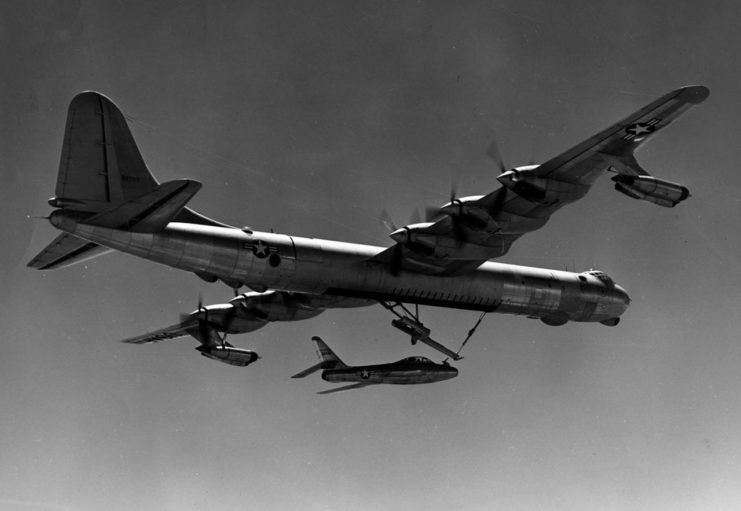
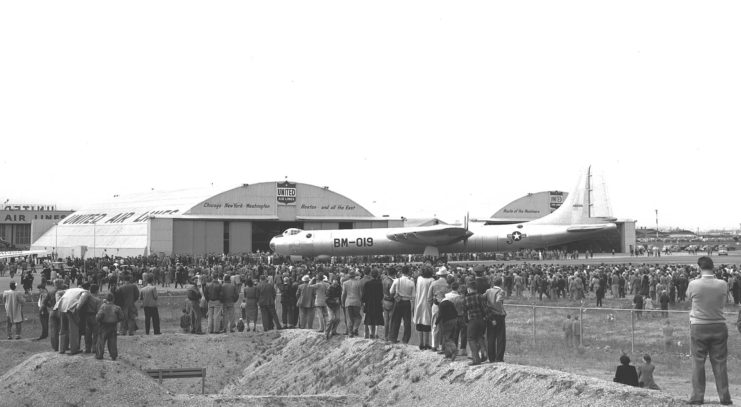
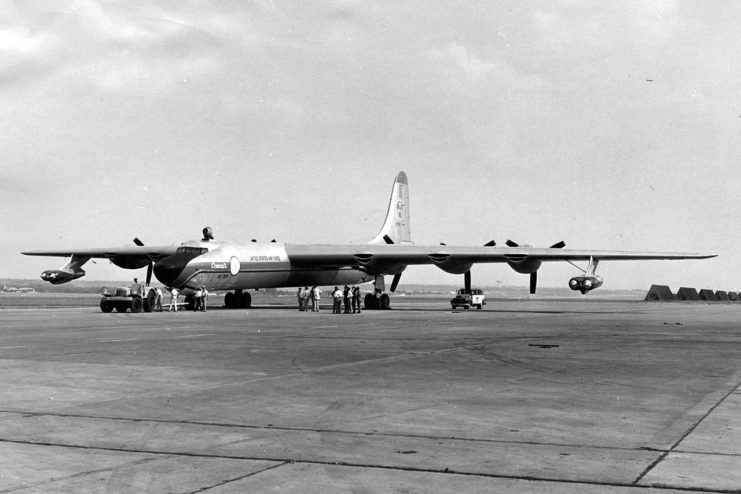
Another Article From Us: Researchers Recover More Artifacts from the Ship that Carried the Elgin Marbles
